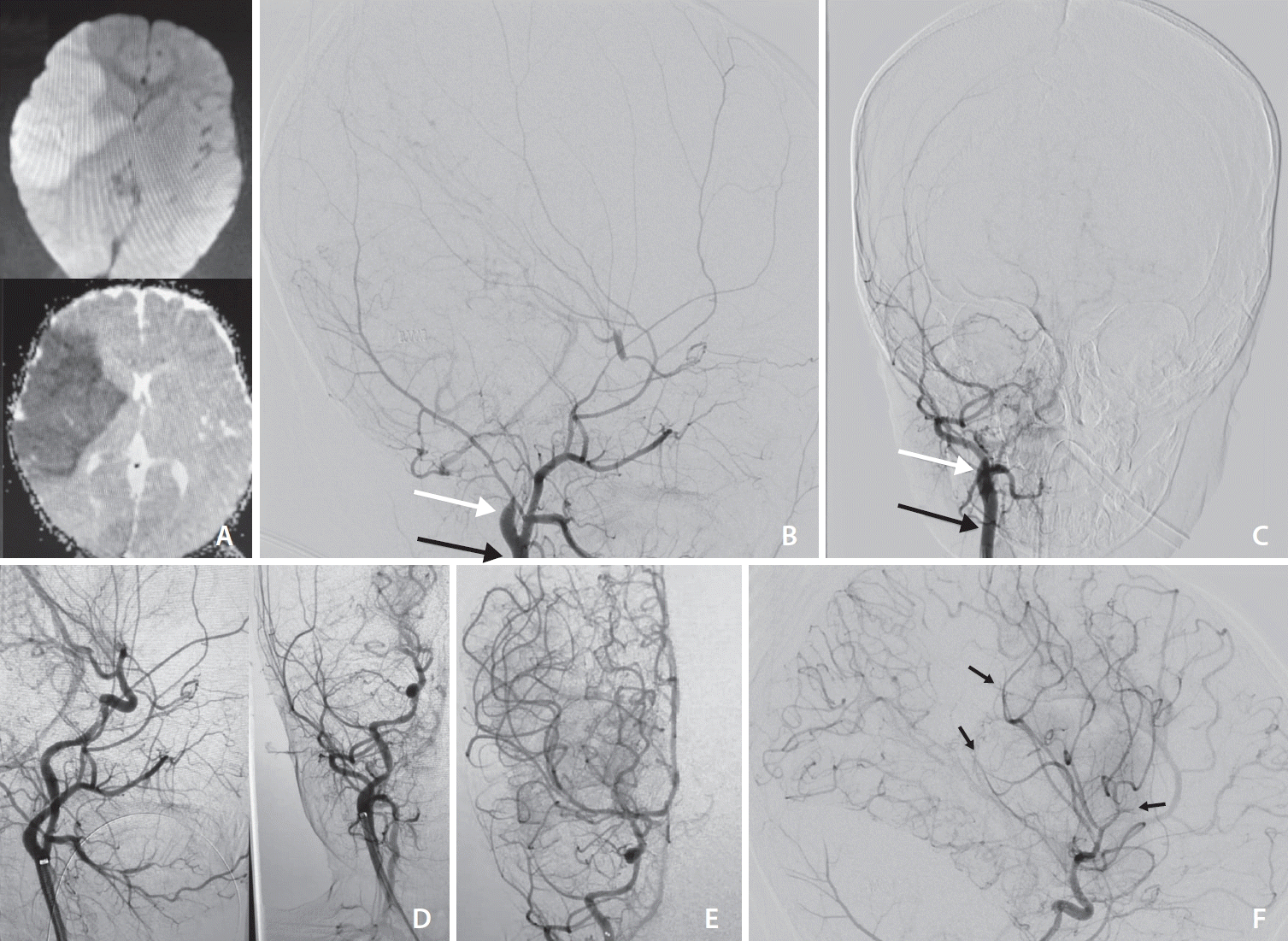1. Shoirah H, Shallwani H, Siddiqui AH, Levy EI, Kenmuir CL, Jovin TG, et al. Endovascular thrombectomy in pediatric patients with large vessel occlusion. J Neurointerv Surg. 2019; 11:729–732.

2. Sporns PB, Fullerton HJ, Lee S, Kim H, Lo WD, Mackay MT, et al. Childhood stroke. Nat Rev Dis Primers. 2022; 8:12.

3. Bhogal P, Hellstern V, AlMatter M, Ganslandt O, Bäzner H, Aguilar Pérez M, et al. Mechanical thrombectomy in children and adolescents: report of five cases and literature review. Stroke Vasc Neurol. 2018; 3:245–252.

4. Ganesan V, Prengler M, McShane MA, Wade AM, Kirkham FJ. Investigation of risk factors in children with arterial ischemic stroke. Ann Neurol. 2003; 53:167–173.

5. Goeggel Simonetti B, Cavelti A, Arnold M, Bigi S, Regényi M, Mattle HP, et al. Long-term outcome after arterial ischemic stroke in children and young adults. Neurology. 2015; 84:1941–1947.

6. Ganesan V, Prengler M, Wade A, Kirkham FJ. Clinical and radiological recurrence after childhood arterial ischemic stroke. Circulation. 2006; 114:2170–2177.

7. Madaelil TP, Kansagra AP, Cross DT, Moran CJ, Derdeyn CP. Mechanical thrombectomy in pediatric acute ischemic stroke: clinical outcomes and literature review. Interv Neuroradiol. 2016; 22:426–431.

8. Kaur N, Patel S, Ayanbadejo MO, Hoffman H, Akano E, Anikpezie N, et al. Age-specific trends in intravenous thrombolysis and mechanical thrombectomy utilization in acute ischemic stroke in children under age 18. Int J Stroke. 2023; 18:469–476.

9. Staby I, Krogh J, Klose M, Baekdal J, Feldt-Rasmussen U, Poulsgaard L, et al. Pituitary function after transsphenoidal surgery including measurement of basal morning cortisol as predictor of adrenal insufficiency. Endocr Connect. 2021; 10:750–757.

10. Nash M, Rafay MF. Craniocervical arterial dissection in children: pathophysiology and management. Pediatr Neurol. 2019; 95:9–18.

11. Fullerton HJ, Johnston SC, Smith WS. Arterial dissection and stroke in children. Neurology. 2001; 57:1155–1160.

12. Stence NV, Fenton LZ, Goldenberg NA, Armstrong-Wells J, Bernard TJ. Craniocervical arterial dissection in children: diagnosis and treatment. Curr Treat Options Neurol. 2011; 13:636–648.

13. Scoville J, Joyce E, Harper J, Hunsaker J, Gren L, Porucznik C, et al. A survey and analysis of pediatric stroke protocols. J Stroke Cerebrovasc Dis. 2022; 31:106661.

14. Christi AY, Suroto NS, Bajamal Z, Al Fauzi A. Primary mechanical thrombectomy for anterior circulation stroke in children: report of two cases and literature review. Int J Surg Case Rep. 2021; 89:106655.

15. Sporns PB, Kemmling A, Hanning U, Minnerup J, Sträter R, Niederstadt T, et al. Thrombectomy in childhood stroke. J Am Heart Assoc. 2019; 8:e011335.

16. Sun LR, Felling RJ, Pearl MS. Endovascular mechanical thrombectomy for acute stroke in young children. J Neurointerv Surg. 2019; 11:554–558.

17. He L, Ladner TR, Pruthi S, Day MA, Desai AA, Jordan LC, et al. Rule of 5: angiographic diameters of cervicocerebral arteries in children and compatibility with adult neurointerventional devices. J Neurointerv Surg. 2016; 8:1067–1071.

18. Gandhe RU, Bhave CP, Kakde AS, Sathe KA. Endovascular aspiration of clot in a 3-year-old child with embolic infarct of right middle cerebral artery. Saudi J Anaesth. 2018; 12:643–645.

19. Aburto-Murrieta Y, Méndez B, Marquez-Romero JM. Extended time window mechanical thrombectomy for pediatric acute ischemic stroke. J Cent Nerv Syst Dis. 2022; 14:11795735221098140.

20. Sarraj A, Hassan AE, Abraham MG, Ortega-Gutierrez S, Kasner SE, Hussain MS, et al. Trial of endovascular thrombectomy for large ischemic strokes. N Engl J Med. 2023; 388:1259–1271.
21. Yoshimura S, Sakai N, Yamagami H, Uchida K, Beppu M, Toyoda K, et al. Endovascular therapy for acute stroke with a large ischemic region. N Engl J Med. 2022; 386:1303–1313.






 PDF
PDF Citation
Citation Print
Print



 XML Download
XML Download